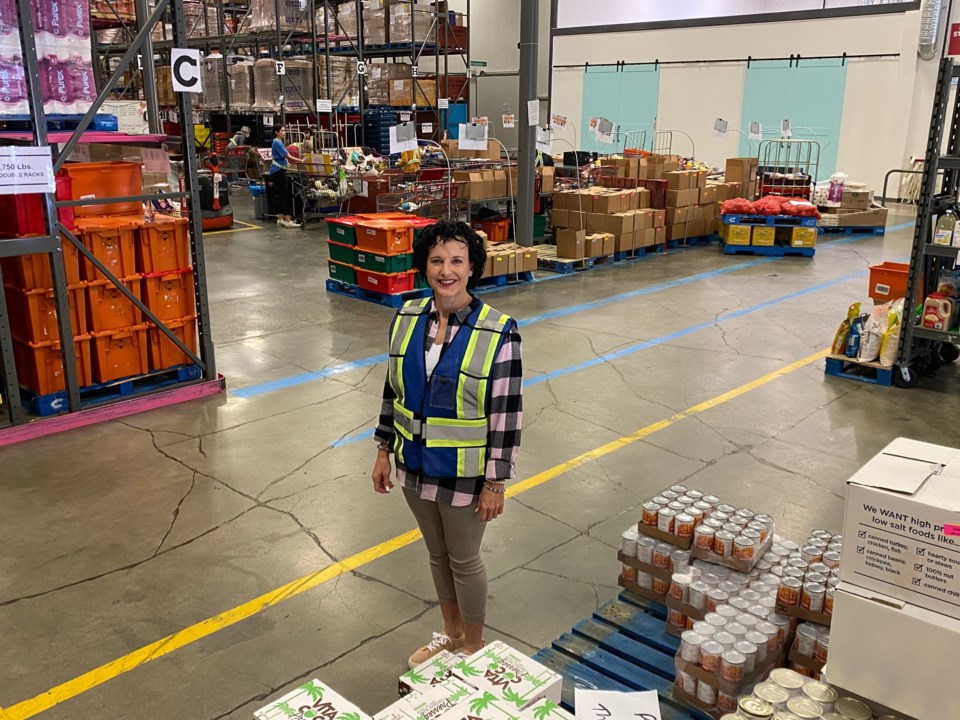B.C. food banks are feeling the compounding effects of inflation, as demand soars while the rate of donations stands idle or declines in many communities.
Food Banks Canada reports 23% of Canadians polled are eating less than they believe they should because there wasn't enough money for food.
This has translated into a 25% uptick nationwide of people seeking food bank donations for the first time — a figure that is higher in Metro Vancouver.
"This summer will be the toughest Canada's food banks have ever experienced in our 41-year history," said Food Banks Canada's CEO Kirstin Beardsley, in a June 6 statement.
"The majority of food banks in every region of Canada are already stretched to their limits, with demand expected to remain high throughout the summer months as more and more Canadians struggle to cope with rising inflation," added Beardsley.
"The biggest sign that inflation is seriously impacting hunger and food insecurity in Canada, is that the reasons why people say they are coming to food banks is changing," said Beardsley.
"In the past, people would turn to food banks during times of job loss, or due to lower wages — but over the past six months, Canadians are telling us that they are running out of money for food because of rising housing, gas, energy and food costs. That's an indication that we need to find new longer-term solutions to fight hunger and food insecurity."
Demand up 35% in Vancouver
The Greater Â鶹´«Ã½Ó³»Food Bank, which serves Vancouver, Burnaby, New Westminster and the North Shore municipalities, has seen a rise in demand of about 35% in the first quarter of 2022 as compared to 2021.
However, demand is only expected to grow as new clients grow and existing ones stay.
“I am quite concerned about the new client registrations; there’s about a 90% increase in those,” in recent months, said chief operating officer Cynthia Boulter.
“We’re adding about 1,000 new clients a month, which is quite staggering,” said Boulter, adding a typical month prior to the pandemic would see about 400 new clients.
Two years ago the food bank handed out five million pounds of food. This year, it'll be 8.5 million pounds, said Boulter.
Meanwhile, food donations this year are up 20% compared to last year, on the strength of community partners, such as grocery stores, she added. However, cash donations are down 10%.
“We expected a decline to some degree,” said Boulter, noting people are returning to traditional charities such as the food bank following the early pandemic disruptions.
Seniors in Richmond feeling inflation pinch
In Richmond, demand has risen about 20% in 2021 compared to 2020, according to Richmond Food Bank executive director Hajira Hussain.
And demand is only accelerating in the short term, with a 9% uptick in May compared to April.
Seniors on a fixed income, or with no income, comprise a large and noticeable cohort for the non-profit society.
“We are seeing a lot of returning clients and a lot of new clients,” said Hussain.
The food bank is receiving the same amount of perishable foods thanks to community partnerships; however, non-perishable food donations — which typically come from the broader public — are declining this year.
“From the community that’s the category of food we receive and that’s gone down,” said Hussain, adding she’s had to purchase pasta recently — something she hasn’t done in years.
Surrey sees demand from refugees and international students
In Surrey, Neeraj Walia, director of the Guru Nanak Food Bank, says rising food costs and higher demand from newly arrived refugees and returning international students are compounding problems.
Typically, the food bank sees about 175 new clients each month but since January it is seeing 480, said Walia.
The client base was about 1,800 people last December but is now about 3,500.
While demand is soaring, supply of food remains the same.
“As a food bank coordinator, this is hard for the food bank to fulfil. We have to be continuously looking for donors. This is challenging times,” said Walia.
Prime Minister Justin Trudeau visited Guru Nanak Food Bank on May 25 and Walia informed him that the government grant system for food banks needs to be strengthened and expanded. Walia also told the prime minister that refugees need better support, including job placements, in order to not end up in the food lines within days or weeks of arrival.
Price of grain spiking the most: Statistics Canada
, in May, Canadians paid 9.7% more in April for food purchased from stores compared with April 2021. This increase, which exceeded 5% for the fifth month in a row, was the largest increase since September 1981.
Basics, such as fresh fruit (+10.0%), fresh vegetables (+8.2%) and meat (+10.1%), were all more expensive in April compared with a year earlier. Prices for starchy foods such as bread (+12.2%), pasta (+19.6%), rice (+7.4%) and cereal products (+13.9%) also increased. Additionally, a cup of coffee (+13.7%) cost more in April 2022 than in April 2021.
